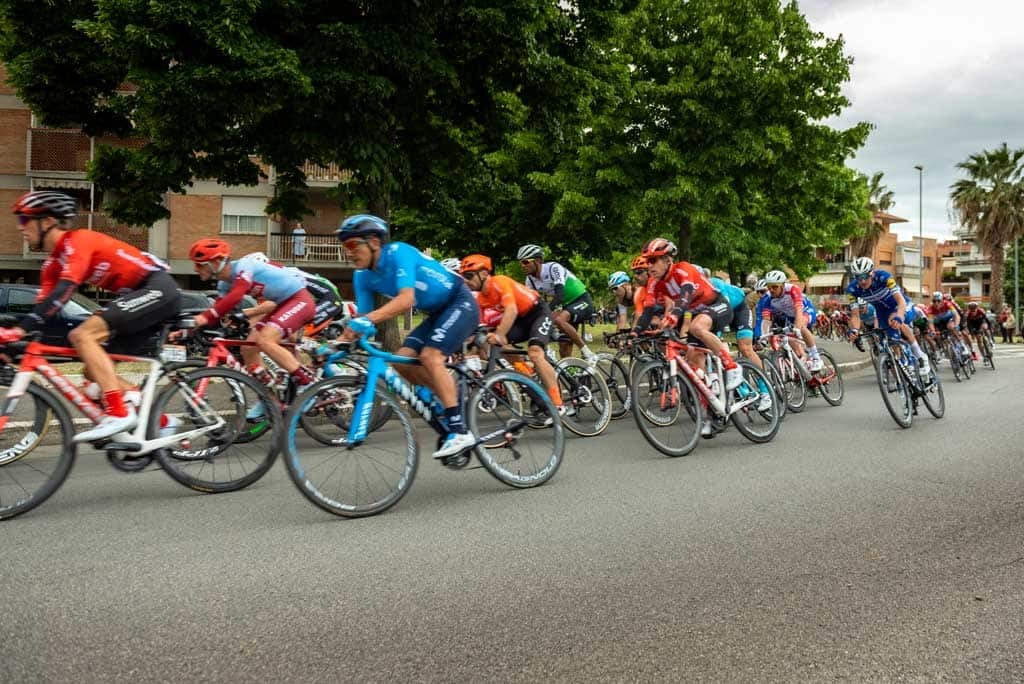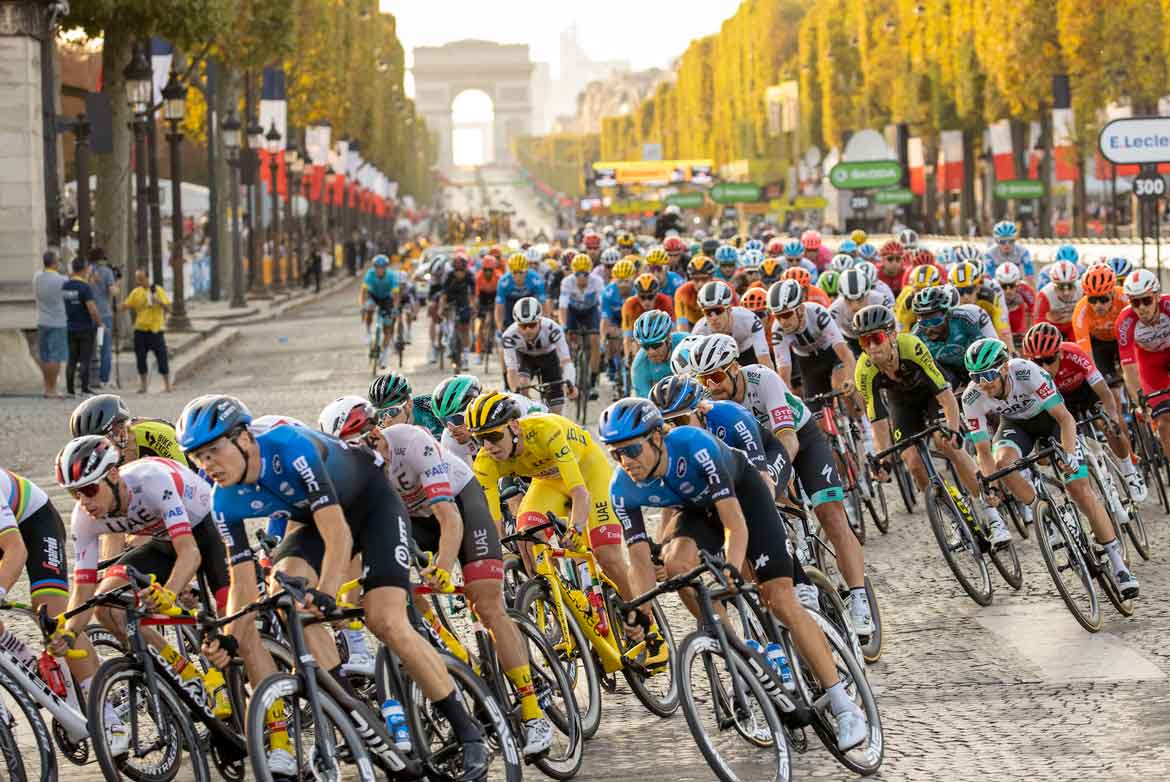Table of Contents
The anticipation hangs heavy in the air, thick as the summer heat that settles upon France each July. But the 2024 Tour de France promises something different, a departure from the familiar that sets hearts alight with both excitement and a flicker of trepidation. For the first time, wheels will spin not in France, but amidst the sun-kissed piazzas and rolling hills of Italy.
This Grand Départ carries a weight of history; a century has swept past since an Italian, Ottavio Bottecchia, first wore the iconic yellow jersey. It’s a testament to the Tour’s enduring power, its ability to transcend borders and ignite passions across generations.
From Florence to Nice, the route weaves a tapestry rich in contrast. Riders will strain against the merciless ascent of Alpine giants, where the air thins and legs scream in protest. But nestled between these brutal climbs lie valleys painted with vineyards, offering fleeting moments of respite before the relentless push towards Paris – or rather, Nice, for this year alone.
The Tour de France is not merely a race; it is a trial of the human spirit. Each pedal stroke is a victory, however small, against fatigue, doubt, and the merciless ticking of the clock. Within the peloton, rivalries burn hot, but camaraderie runs deeper still – for out on those grueling roads, even adversaries become brothers in arms, bound by a shared hunger for that elusive taste of triumph.
And while the names etched upon the trophy will be those of the strongest, the fastest, and the most tactically astute, the 2024 Tour de France will write its stories on the faces of every rider.
In the grimace of a fallen competitor pushing on, in the tears of joy streaking a mud-splattered cheek, we witness the essence of this race: unyielding determination that borders on the edge of madness.
Let the games begin!
What is The History of Tour de France?
The Tour de France, a testament to the unwavering limits of human endurance, embodies the ultimate cycling challenge. As the 2024 edition draws near, let’s explore the vibrant history of this iconic race – a history intertwined with narratives of hard-won victories, unforeseen struggles, and the unyielding resolve that ignites the world of sport year after year.
Amidst the fierce competition of early 20th-century France, an ambitious plan took shape within the struggling sports publication, L’Auto. Its editor, Henri Desgrange, conceived a cycling epic as a means to invigorate readership and propel his sport to new heights. This bold vision sparked the birth of the inaugural Tour de France in 1903, an unparalleled crucible of willpower and stamina.
Those initial Tours were grueling even by modern measure. Cyclists grappled with treacherous dirt roads, unreliable bicycles, and stages so vast they stretched into the depths of night.
Yet, these harsh conditions birthed legends and enthralled the nation. Maurice Garin, the inaugural champion, exemplified this unyielding spirit, his journey from chimney sweep to cycling icon a testament to the era.
Throughout the decades, the Tour de France has ceaselessly transformed, mirroring changing times and advancements in the sport. Its routes have twisted and turned, introducing the awe-inspiring ascents of the Alps and Pyrenees, majestic arenas where cycling heroes are made.
As its renown spread across the globe, the Tour’s legacy became entwined with extraordinary figures: Louison Bobet, the first to claim three successive wins; Eddy Merckx, a force of relentless ambition; and the dramatic ascent and fall of Lance Armstrong.
The 2024 Tour de France, while retaining its indomitable spirit, will reflect the innovations of today. Anticipate state-of-the-art bikes, meticulously assembled teams, and a field of play where the smallest improvements can spell the difference between triumph and heartbreak.
Still, beneath the spectacle lies that timeless test of the human will, a battle played out across a landscape crafted to challenge the very boundaries of physical endurance.
And so, when the riders line up in the summer of 2024, they step not only into a competition, but into the grand narrative of the Tour de France.
A story of unyielding resolve, a relentless hunger for glory, and a testament to the extraordinary that resides within the limitations of the human form.

Who Won the Last Edition of Tour de France?
As the excitement for 2024’s Tour de France begins to simmer, the adrenaline-fueled clashes and superhuman feats of the previous race still linger in the memory.
Naturally, the burning question on every cycling enthusiast’s lips is: who conquered that three-week gauntlet, forever inscribing their name in Tour de France legend?
The answer, of course, shifts with the turning of the seasons.
Each summer, a new Tour de France champion is crowned, their triumph echoing through the cycling world until the next year’s race. But, if you yearn for the victor of the most recent Tour prior to 2024, let’s revisit the not-so-distant past.
Imagine the relentless whir of wheels across sun-baked asphalt, muscles straining in the unforgiving climbs of the Alps or the Vosges. These iconic landscapes may well be where the previous Tour found its champion – a battle decided by the slimmest of margins, heart-stopping breakaways, and a clash of iron wills.
To discover the champion, you’ll need to check cycling news websites and trusted resources dedicated to the Tour de France. These sites delve into the victories and heartbreaks of each edition, preserving the legacies of those who conquer this prestigious race.
You might even uncover thrilling video highlights showcasing the winner’s final push to the iconic finish line on the Champs-Élysées in Paris. The true allure of the Tour de France rests in its ceaseless renewal, the thrilling interplay of past glory and the endless possibilities of the future.
Every year, the race introduces emerging talents and rekindles passionate rivalries, guaranteeing those breathtaking moments that etch the names of cycling heroes into the collective memory of global fans.
How Long Does it Take to Complete a Stage in Tour de France?
The Tour de France’s dynamic blend of terrain and race formats means there’s no simple answer to the question, “how long does a stage take?”. Unlike a race with a fixed distance and a single loop, the Tour consists of a multitude of stages, each possessing distinct features that dramatically alter the time spent in the saddle. Let’s explore why!
Factors at Play
- Distance: Perhaps the most obvious factor: stages can range from short, explosive sprints to monstrously long mountain treks. In the 2024 Tour de France, you might see a sprinter power their way to victory in a relatively swift three hours, while the next stage, snaking through the heart of the Alps, could devour six or more grueling hours.
- Terrain: Imagine smooth, flat plains versus the relentless switchbacks of a mountain pass. Terrain dramatically affects a rider’s speed and effort expenditure. Flat stages often invite blistering paces, while climbs add the constant battle against gravity, stretching out the hours spent in the saddle.
- Race Strategy: The Tour de France isn’t solely about raw speed. Tactics play a critical role—teams might conserve energy early in a stage for a strategic breakaway at the end, impacting the overall time.
Types of Stages
To add to the complexity, the Tour features several distinct stage types:
- Flat Stages: Built for sprinters, these usually offer the fastest, most straightforward routes.
- Mountain Stages: The defining tests, where climbers shine and time differences can become chasms.
- Time Trials: Individual races against the clock – pure aerodynamic power battles.
- Team Time Trials: Where a squad’s cohesion and collective ability become crucial.
A Touch of Unpredictability
Even with all these factors in mind, the Tour de France, fueled by both meticulous planning and the thrilling uncertainty of competition, rarely unfolds exactly as intended. Weather conditions, sudden crashes, or surprise attacks from underdogs can extend a stage’s completion time in unforeseen ways.
Where to Find the Answers
If you crave specific details about the 2024 Tour de France stages, the official Tour de France website is your best bet. Here you’ll find stage profiles, estimated timings, and detailed routes giving you a clearer picture of just how long those legs will be burning!
Who Won the First Tour de France?
As excitement for the 2024 Tour de France reaches a fever pitch, it’s fascinating to cast our minds back to the event’s humble beginnings – a time when bicycles were clunky machines, roads treacherous, and the idea of a multi-week cycling epic seemed a touch audacious. The history of the Tour is riddled with fascinating figures, and none stand taller than the winner of that very first race: Maurice Garin.
Imagine France in 1903: The air hangs heavy with the promise of innovation but remains rooted in the traditions of the past. Garin, a man more accustomed to cleaning chimneys than claiming cycling glory, stepped out of obscurity and into sporting legend.
While we might picture modern champions astride cutting-edge machines, Garin tackled those brutal early stages on a single-speed behemoth, battling exhaustion and mechanical failure on the poorly maintained roads.
His victory wasn’t merely about physical prowess; Garin faced accusations (never definitively proven) of cheating, with some suggesting he hopped on trains or took motorized assistance to gain advantage. His win, while steeped in controversy, highlights the scrappy, sometimes chaotic nature of those inaugural Tours.
Time may separate Garin’s story from the polished spectacle of the 2024 Tour de France, but an important thread connects them. Whether in a distant era or modern-day, the victory demands more than powerful legs; it takes relentless determination, tactical astuteness, and perhaps a bit of luck when facing the grueling challenge that is the Tour de France.

What is the Longest Stage in Tour de France?
The Tour de France is a realm where sprawling distances and grueling climbs are the norm, but even within this extraordinary arena, certain stages transcend the merely difficult, becoming mythical trials that test the very boundaries of human endurance.
Seeking the longest stage in Tour de France history is a quest into the past, a search for moments when the limits of strength and determination were redefined.
While the route for the 2024 Tour de France may hold surprise contenders for the longest stage title, history provides a fascinating benchmark.
Back in 1919, just after the devastation of World War I, the 5th stage of the Tour de France stretched an extraordinary 482 kilometers (almost 300 miles)! Imagine pedaling that staggering distance – a feat taking most cyclists the better part of two days – in a single, relentless leg of the competition.
Routes of such monstrous length are relics of a different cycling era. Riders used heavy, less efficient bikes, navigated rough, unpaved roads, and often suffered mechanical issues throughout those seemingly endless miles. It wasn’t simply about physical fitness, but sheer unyielding tenacity in the face of conditions unimaginable to most modern cyclists.
While the 2024 Tour de France will, thankfully, not feature legs rivaling that iconic 1919 distance, the quest for the longest stage is an ever-present element of the race’s mystique.
Each year, as the route is announced, cycling fans eagerly scan the profiles, looking for that defining day that will separate the strong from the truly relentless.
So, what makes a stage ‘the longest’? It’s not simply about sheer distance. The inclusion of brutal mountain climbs, winding descents, and potentially harsh weather conditions can drastically add to the challenge even on a shorter stage.
The Tour de France’s longest stage is never just a measurement on a map – it’s a grueling test of willpower destined to become etched in the race’s captivating history.
How Many Stages are There in a Typical Tour de France?
The Tour de France, with its iconic yellow jersey and those breathtaking glimpses of the French countryside, isn’t just a single race, but rather an epic sporting saga played out over several weeks. While the route, challenges, and eventual winner change from year to year, one element remains fairly consistent: the number of stages that make up this extraordinary test of human endurance.
Typically, the Tour de France includes 21 stages spread across three weeks. The race organizers might make slight adjustments from year to year, but you can usually expect around three weeks of thrilling battles on the bike.
Of course, the 2024 Tour de France might boast a surprise shift in its stage count, making it worth checking official sources closer to the start date for the most accurate details.
Why 21 stages? Interestingly, there’s more to it than simply tradition. This number offers a delicate balance: enough stages to provide a comprehensive test of a rider’s overall ability – climbing, sprinting, time trialing – while respecting the sheer physical limits of athletes pushing their bodies to the extreme. It also leaves room for those crucial rest days, where exhausted riders can recover and gear up for another round of challenges.
The stage count is a crucial part of the Tour de France mystique. It’s a marker of progress as contenders fight tooth and nail, each stage win bringing them closer to the dream of ultimate victory on the Champs-Élysées.

What is a Peloton in Cycling?
When you envision the Tour de France, even ahead of the 2024 installment, you probably picture that iconic swirl of brightly clad cyclists hurtling down a road. This tightly packed mass of riders isn’t merely a visual spectacle; it’s a strategic masterstroke known as the peloton.
The word “peloton” derives from French, originally meaning a “small ball” or “platoon”, which perfectly sums up its appearance. Within a race, the peloton refers to the main group of riders. Picture it as an ever-shifting organism, a flock of determined riders clustering to gain a crucial advantage.
But why cluster together? Cycling, you see, is a constant war against air resistance. By riding in the slipstream of another cyclist, a rider enjoys a significant reduction in drag, conserving precious energy. It’s like drafting behind a speeding truck on a highway, but exponentially more demanding!
Within the peloton, riders aren’t just mindlessly following; it’s a dance of teamwork and rivalry. Teams carefully position their stars within the group, shielding them from the wind and conserving their strength for a final sprint or brutal climb.
Riders on the edges sacrifice themselves to give their teammates an edge. Meanwhile, breakaways form and dissolve as competitors attempt to shake the peloton’s grip and take a risky dash for glory.
The 2024 Tour de France will undoubtedly showcase the beautiful chaos of the peloton in action. Watch for tight groups jockeying for position on flat stages, or the way the peloton fractures amidst grueling mountain climbs. Understanding this dynamic element adds another fascinating layer to appreciating the sport’s strategy and athleticism.

